Test fuel pump operation by applying battery voltage to pump motor electrical connector terminals.
Note. The fuel pump is installed in the fuel tank, so the sound of its operation is audible only when the filler cap is removed.
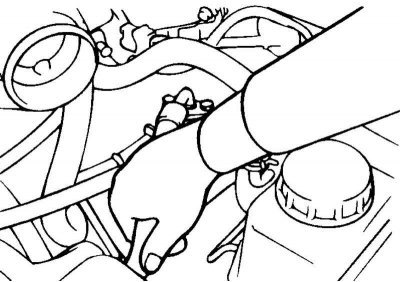
Pic. 2.210. Checking for pressure in the fuel supply hose
Make sure the fuel supply hose is pressurized by squeezing it with your hand (pic. 2.210).
Fuel pressure check
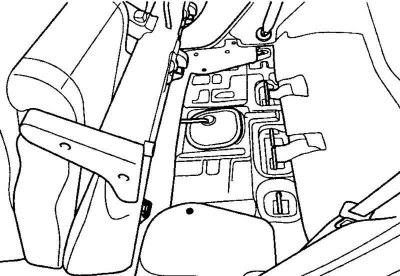
Pic. 2.211. Hatch for access to the fuel pump from inside the car (rear seat folded down)
Fold the rear seat back, then fold the folded rear seat forward (pic. 2.211).
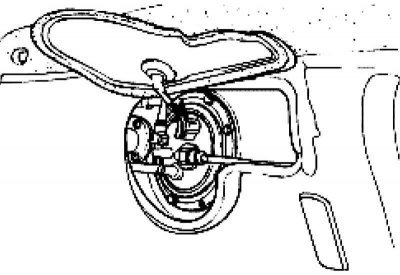
Pic. 2.212. Fuel pump access hatch (open)
Using a screwdriver, open the cover of the fuel pump hatch in the bottom of the car under the rear seat (pic. 2.212).
To relieve pressure in the fuel lines and hoses, start the engine with the fuel pump off and wait until the engine has stopped.
Note. Depressurize the fuel before disconnecting the fuel line and hose to prevent fuel escaping.
Disconnect the terminal from the negative terminal («–») battery and connect the fuel pump electrical connector.
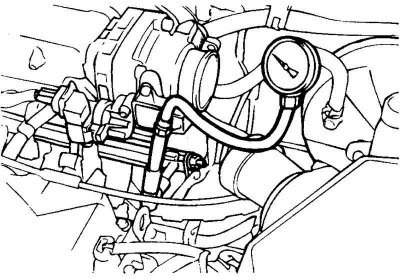
Pic. 2.213. Connecting a pressure gauge to measure fuel pressure in the system
Connect test gauge (pic. 2.213) to the fuel filter using an adapter. Tighten the fuel pressure gauge adapter securely.
Connect the terminal to the negative terminal («–») battery.
Turn on the fuel pump by applying battery voltage to the pump electrical connector terminals.
After pressurizing the fuel, check that there are no fuel leaks from the test gauge and its connections.
Start the engine and leave it to idle.
Check the fuel supply pressure.
Rated value: 350 kPa (3.5 kgf/cm2).
If the fuel supply pressure is not correct, determine the cause and correct the problem as follows.
Stop the engine and monitor the fuel pressure on the control pressure gauge: the pressure should be maintained for approximately 5 minutes. If the pressure drops, determine the rate of fall. Determine and correct the cause of the pressure drop as follows.
Note. When disconnecting the hose, cover the fitting with a rag to prevent fuel from escaping, as the fuel line is under residual pressure.
Replace the o-ring on the hose fitting.
Attach the fuel hose to the fuel pump fitting and tighten the fitting.
Check for fuel leaks.
Replacing the fuel filter and fuel pump
Relieve pressure in the fuel lines and hoses by doing the following:
Remove the rear seat cushion and disconnect the fuel pump electrical connector.
Start the engine, wait until the engine stops, turn off the ignition.
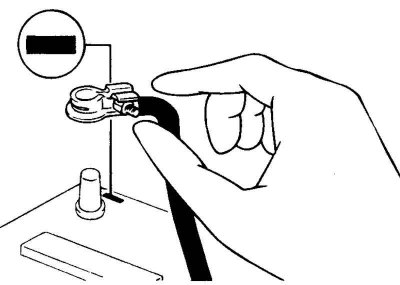
Pic. 2.214. Removing the negative terminal of the battery
Disconnect the terminal from the negative terminal («–») battery (pic. 2.214).
Connect the fuel pump electrical connector.
Loosen the eye bolts while holding the fuel filter nuts from turning.
Note. Cover the fuel filter with a cloth to prevent the remaining fuel from escaping.
Turn away bolts of fastening of the fuel filter and take out the filter from a fastening collar.
After replacing the fuel filter, check for fuel leaks.
Overflow restrictor replacement (on/off valve)
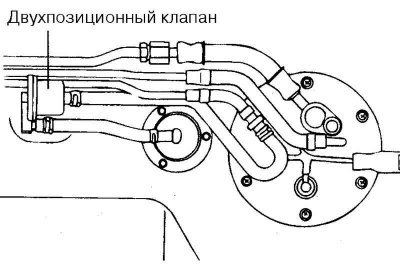
Pic. 2.215. overflow limiter (on/off valve)
Disconnect the fuel vapor hose (pic. 2.215), then remove the overflow restrictor.
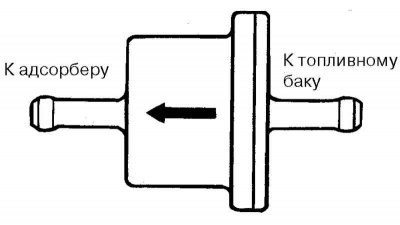
Pic. 2.216. Installation position of the overflow limiter
Connect the overflow restrictor to the fuel lines in the correct position (pic. 2.216).
Replacing the fuel gauge sensor
Remove the fuel filler cap to relieve pressure in the tank.
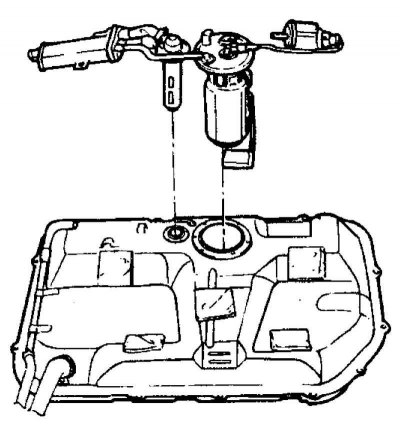
Pic. 2.217. Fuel gauge sensor and fuel pump
Loosen the screws securing the fuel gauge sensor and remove the sensor from the tank (pic. 2.217).
